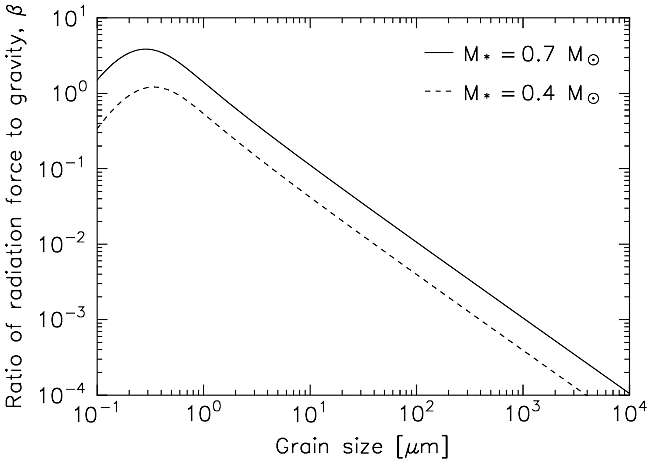The effect of radiation pressure on the dispersal of photoevaporating discs

The effect of radiation pressure on the dispersal of photoevaporating discs
Alfie Robinson, James E. Owen, Richard A. Booth
AbstractObserved IR excesses indicate that protoplanetary discs evolve slowly for the majority of their lifetime before losing their near- and mid-IR excesses on short timescales. Photoevaporation models can explain this "two-timescale" nature of disc evolution through the removal of inner regions of discs after a few million years. However, they also predict the existence of a population of non-accreting discs with large cavities. Such discs are scarce within the observed population, suggesting the models are incomplete. We explore whether radiation-pressure-driven outflows are able to remove enough dust to fit observations. We simulate these outflows using cuDisc, including dust dynamics, growth/fragmentation, radiative transfer and a parameterisation of internal photoevaporation. We find that, in most cases, dust mass-loss rates are around 5-10 times too small to meet observational constraints. Particles are launched from the disc inner rim, however grains larger than around a micron do not escape in the outflow, meaning mass-loss rates are too low for the initial dust masses at gap-opening. Only systems that have smooth photoevaporation profiles with gas mass-loss rates $>\sim 5 \times 10^{-9}$ $M_\odot$ yr$^{-1}$ and disc dust masses $<\sim$1 $M_\oplus$ at the time of gap opening can meet observational constraints; in the current models these manifest as EUV winds driven by atypically large high-energy photon fluxes. We also find that the height of the disc's photosphere is controlled by small grains in the outflow as opposed to shadowing from a hot inner rim; the effect of this can be seen in synthetic scattered light observations.